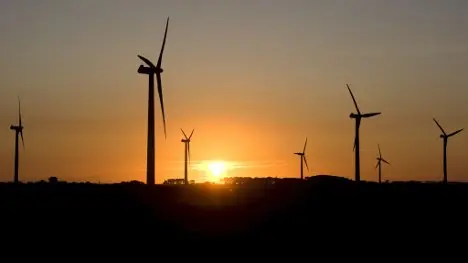Wind
Wind power has been a success in Germany – despite the fact that the country is not a particularly windy place. Between 1991 and 2008, Germany installed more than 20,000 wind turbines with a total capacity of 23,903 megawatts providing 7.5 percent of Germany’s total electricity. Until the Unite States finally took the lead in 2007, Germany had been the world’s largest market for wind power for more than a decade.
But losing first place in installed wind capacity is not a bad thing. “Our export statistic is about 80 percent,” said Ulf Gerder, spokesman for the German Wind Energy Association. “So the wind industry manufacturers in Germany are very happy with global development.”
Among wind industry manufacturers, Germany has so far held its ground. Two of the top six companies, who accounted for 70 percent of 2008 installations, are German – Siemens and Enercon. “In wind energy, Germany is a first-mover,” said Claudia Kemfer, energy expert at the German Institute for Economic Research. “Now of course the competition is increasing, as US companies and Chinese companies are active. But particularly in wind, Germany is very competitive.”
Domestically, wind energy is on track to become affordable within this decade. Now, wind costs nine cents per kilowatt hour to produce, in comparison to five cents for traditional fuels and 42 cents for solar. Last year, feed-in tariff legislation passed that guarantee high enough tariffs for offshore windmill projects that the construction of large wind farms in the Baltic and North seas will be financially viable.
The industry continues to have its eye on the global market. “The US and China are the biggest markets,” said Gerder. “They are vast in comparison to Germany, which is a very small state.”
But that’s not to say that the national market is negligible. By 2020, wind is projected to supply up to 25 percent of Germany’s electricity needs. This, in turn, is good for the manufacturers.
“The national market is important for research,” said Gerder. Pressing technical issues include finding better storage technology and dealing with the question of how to integrate wind energy into the electric grid, which was designed for more centralised power sources. Plans for a ‘smart grid’ that can better adapt to renewable resources are in the making. The ability to address these kinds of problems at home before taking the solution to the global market, said Gerder, is a real advantage. “It’s always better to check it out first in Germany.”

Comments